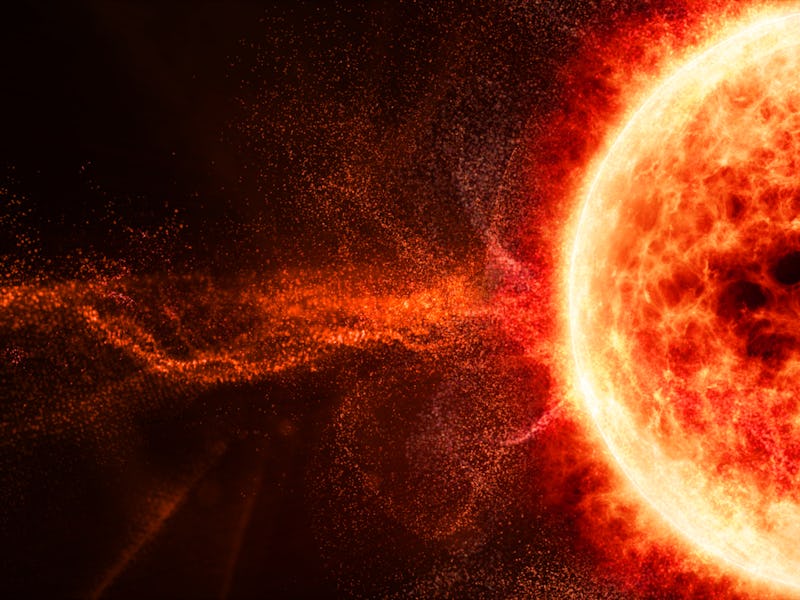Europe’s Sun probe just survived a potentially world-ruining solar storm
Some of Solar Orbiter’s instruments had to be turned off during the event.

Massive solar storms on the Sun are becoming more common as it moves into a period of increasing solar activity as part of Solar Cycle 25, which is expected to peak in 2025.
There’s one spacecraft that will be very well placed to capture that increasing activity: Solar Orbiter is currently 25 percent of the way through its 10-year mission of observing the Sun. By 2025, it will be closer than ever to our parent star, and it has already started observing some fantastic phenomena from our Sun.
One of those spectacular phenomena happened recently during a gravity assist Solar Orbiter received from Venus. The Sun had a coronal mass ejection (CME) toward Venus and the Orbiter. It was almost like it was jealous that the satellite designed to study it was cozying up to another heavenly body.
Obviously, the Orbiter’s presence isn’t why the Sun decided to discharge toward the second planet. And ultimately, being hit by such an intense solar storm had no damaging impact on the probe, mainly because it was specifically designed to observe phenomena like the CME.
ESA video describing Solar Orbiter’s mission from ESA YouTube Channel.
Some of Solar Orbiter’s instruments had to be turned off due to the sunlight reflected off of Venus itself. That means they missed being able to gather data on this CME. However, some other instruments were kept on and noticed an increase in the number of energetic solar particles in the probe’s proximity.
There is plenty we still don’t understand about heliophysics and the underlying causes of these solar storms. Solar Orbiter itself is only one of several craft that is actively measuring the Sun. One, in particular, known as Vigil, will help us determine the directionality of solar storms.
Currently, it is difficult to determine whether the storms are headed directly toward Earth or directly away from it — particles from storms in both directions appear like halos around the Sun. But from Vigil’s planned vantage point of the Earth-Sun L5 Lagrange point, it will have a unique angle to monitor space weather that could potentially affect Earth and all of its infrastructure.
While these additional missions are getting up to speed, Solar Orbiter is picking up even more of it, eventually planning to become the fastest-moving object ever built by humans. It will continue to monitor the Sun and use Venus for gravity assistance for the duration of its mission. The CME it recently suffered will certainly not be the last one it deals with either.
This article was originally published on Universe Today by Andy Tomaswick. Read the original article here.